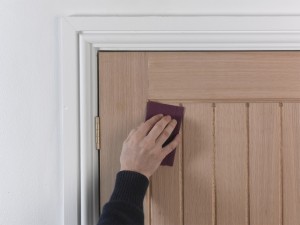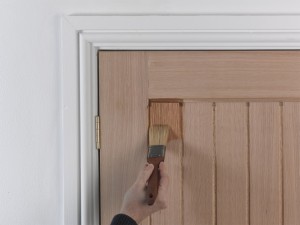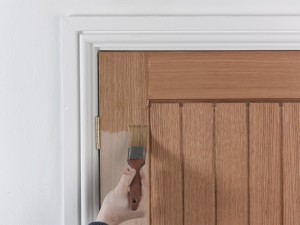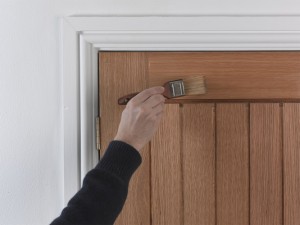Oiling wood
Oil provides a natural finish to bare wood, and is similar to wax in that it is a deep penetrating option that can be buffed up to a smooth mid sheen finish. Wood must be totally stripped of any previous coatings before application. Unlike wax, oil can be used outside if specified by the manufacturer, but it does need regular re-coating in order to maintain the colour of the wood. Oil is most commonly used on hardwoods.
 |
1. Fill any holes with a suitable wood filler and, when dry, sand the entire surface smooth with a medium grade of sandpaper, followed by a fine grade. |
 |
2. Oil is best applied using a soft paintbrush. Try to apply the oil as evenly as possible and follow the grain of the wood to aid penetration. |
 |
3. Work the oil well into the wood. Excess oil must then be removed from the surface using a clean cloth, or the finish will turn very patchy. |
 |
4. Allow the oil to soak in and the surface to dry thoroughly before buffing with a clean cloth to provide an even sheen finish. |
 |
5. Repeat the process of application and buffing. If you are using oil outside, it is best to apply at least three coats. |
Oiling tips
- Oil or combination products such as wax oil are commonly used on wooden kitchen worktops – see my guide ‘Kitchen worktop oil’ for more advice on the best products to use. In such cases, always check that the product is suitable in terms of hygiene – tung and mineral oil, for example, are commonly used on worktops for this very reason.
- Take care when choosing a filler and make sure that it is compatible for use with oil. Some fillers are coloured and are therefore camouflaged by a similarly coloured finish whereas others can accept colour when the finish is applied over them.
- Always carefully dispose of any cloths or rags as once they have been soaked in oil, they become a potential fire hazard. Ensure that you follow the manufacturers’ guidelines precisely for the most appropriate method of disposal.
